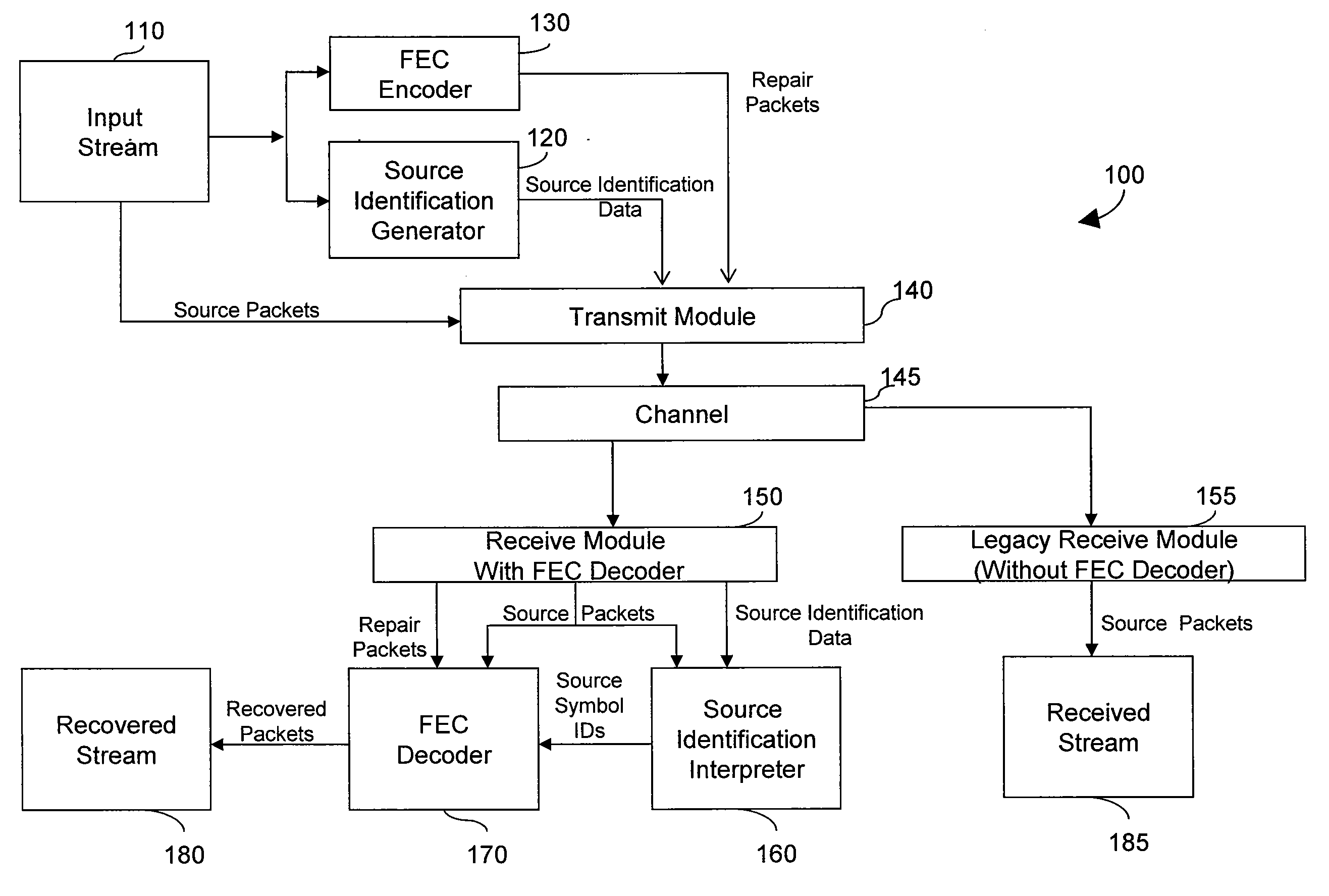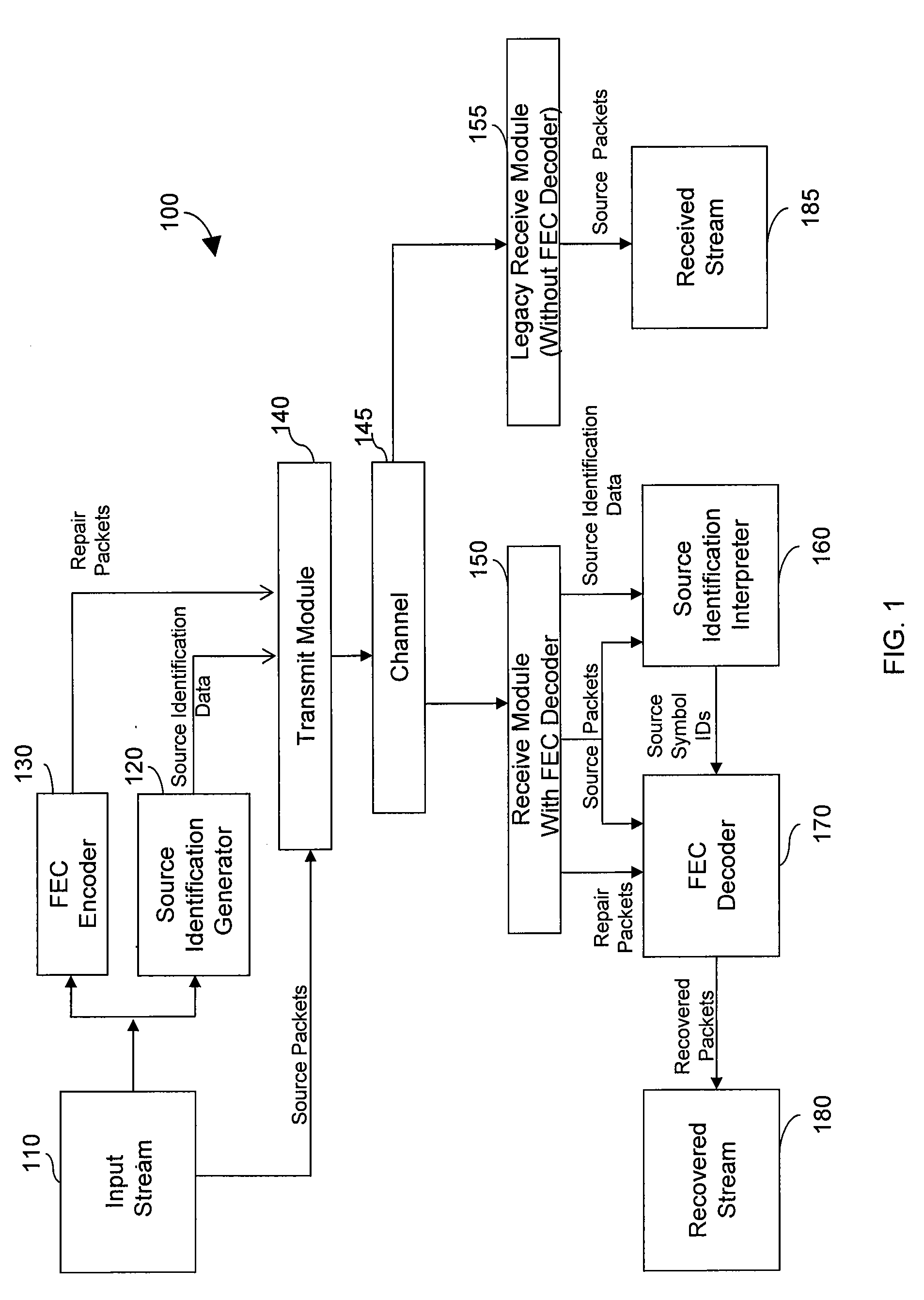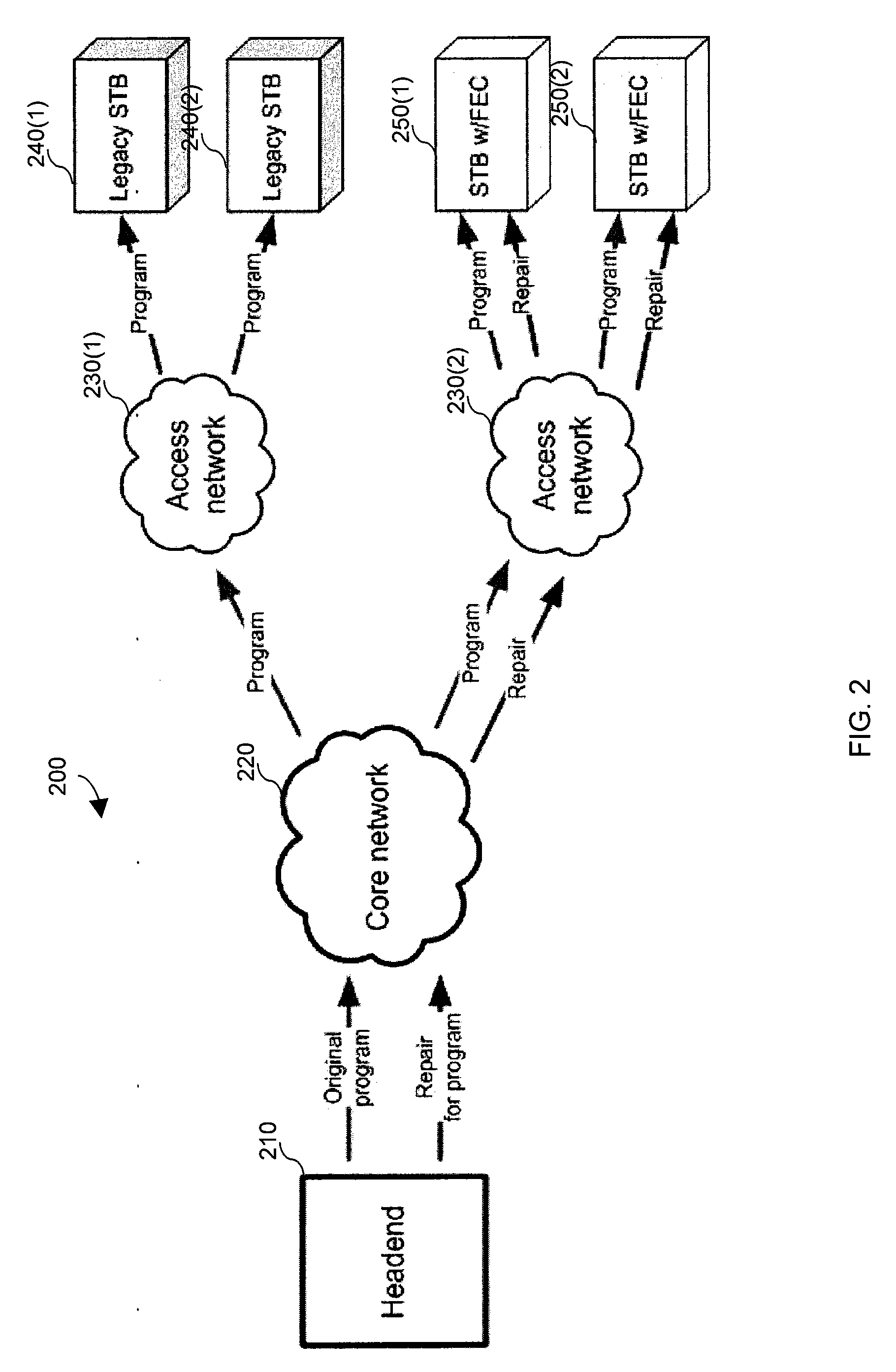Generating and communicating source identification information to enable reliable communications
a source identification and communication technology, applied in the field of encoding and decoding data in communications systems, can solve the problems of data loss, data transmission becomes more difficult, erasure, sent or stored by the sender is different, etc., and achieve the effect of small computation load for deriving source identification information
- Summary
- Abstract
- Description
- Claims
- Application Information
AI Technical Summary
Benefits of technology
Problems solved by technology
Method used
Image
Examples
case study 1
[0167[0168]The source data stream rate is 4 Mbps.[0169]SSM coverage period (=protection period): 125 ms[0170]Loss conditions: 0.1%[0171]Derived parameters:[0172]Number of packets in a source block=48[0173]Number of repair packets=3[0174]SSM considerations:[0175]Number of packets used for SSM (5 packet overlap on each end)=58[0176]Number of hash functions=5[0177]Hash collision vector allocation≈20 bytes[0178]Hash position map allocation≦58 bytes[0179]The SSM length is less than 100 bytes, and thus the entire SSM can be carried in each FEC repair packet.[0180]Failure Rates:[0181]PSSM=(0.1%)3=10−9 [0182]PFEC=2.4*10−7
case study 2
[0183[0184]The source data stream rate is 4 Mbps.[0185]SSM coverage period (=protection period): 250 ms[0186]Loss conditions: 0.7%[0187]Derived parameters:[0188]Number of packets in a source block=95[0189]Number of repair packets=9[0190]SSM considerations:[0191]Number of packets used for SSM (10 packet overlap on each end)=115[0192]Number of hash functions=5[0193]Hash collision vector allocation≈40 bytes[0194]Hash position map allocation≈114 bytes[0195]Entire SSM length 168 bytes[0196]The SSM is split into 2 segments[0197]FEC protection is used to generate another 9−2=7 repair SSM segments[0198]Each FEC repair packet carries one SSM segment[0199]Failure Rates:[0200]PSSM=5.156*10−17 [0201]PFEC=4.052*10−9
case study 3
[0202[0203]The source data stream rate is 6 Mbps.[0204]SSM coverage period (=protection period): 500 ms[0205]Loss conditions: 0.7%[0206]Derived parameters:[0207]Number of packets in a source block=285[0208]Number of repair packets=25[0209]SSM considerations:[0210]Number of packets used for SSM (30 packet overlap at each end)=345[0211]Number of hash functions=7[0212]Hash collision vector allocation≈120 bytes[0213]Hash position map allocation≈400 bytes[0214]Entire SSM length 538 bytes[0215]The SSM is split into 5 segments[0216]FEC protection is used to generate another 25−5=20 repair SSM segments[0217]Each FEC repair packet carries one SSM segment[0218]Failure Rates:[0219]PSSM=6.879*10−42 [0220]PFEC=1.887*10−15
[0221]FIG. 25 is a failure rate chart for a 4 Mbps stream for varying protection periods and protection amounts under 0.7% loss conditions. A conclusion that can be drawn from this data is that the probability of decoding failure due to incomplete SSM is far less than that due ...
PUM
 Login to View More
Login to View More Abstract
Description
Claims
Application Information
 Login to View More
Login to View More - R&D
- Intellectual Property
- Life Sciences
- Materials
- Tech Scout
- Unparalleled Data Quality
- Higher Quality Content
- 60% Fewer Hallucinations
Browse by: Latest US Patents, China's latest patents, Technical Efficacy Thesaurus, Application Domain, Technology Topic, Popular Technical Reports.
© 2025 PatSnap. All rights reserved.Legal|Privacy policy|Modern Slavery Act Transparency Statement|Sitemap|About US| Contact US: help@patsnap.com



